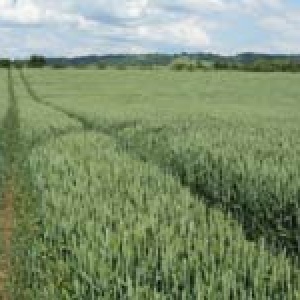Global food availability could be boosted by 70% if croplands were used exclusively to grow food for humans rather than for animal feed and biofuels, according to a new paper by the Institute on the Environment at the University of Minnesota. By decreasing the land used for animal feed and biofuels an additional 4 billion people could be fed. Even a smaller, partial shift from crop-intensive livestock such as feedlot beef to food animals such as chicken or pork could increase agricultural efficiency and provide food for millions.
The paper explains that currently, 36% of the calories produced by the world's crops are being used for animal feed, and only 12% of those feed calories ultimately contribute to the human diet (as meat and other animal products). It also shows the trend in production of biofuels made of human-edible calories, increased from 1% to 4% between 2000 and 2010.
Abstract as follows
Worldwide demand for crops is increasing rapidly due to global population growth, increased biofuel production, and changing dietary preferences. Meeting these growing demands will be a substantial challenge that will tax the capability of our food system and prompt calls to dramatically boost global crop production. However, to increase food availability, we may also consider how the world’s crops are allocated to different uses and whether it is possible to feed more people with current levels of crop production. Of particular interest are the uses of crops as animal feed and as biofuel feedstocks. Currently, 36% of the calories produced by the world’s crops are being used for animal feed, and only 12% of those feed calories ultimately contribute to the human diet (as meat and other animal products). Additionally, human-edible calories used for biofuel production increased fourfold between the years 2000 and 2010, from n1% to 4%, representing a net reduction of available food globally. In this study, we re-examine agricultural productivity, going from using the standard definition of yield (in tonnes per hectare, or similar units) to using the number of people actually fed per hectare of cropland. We find that, given the current mix of crop uses, growing food exclusively for direct human consumption could, in principle, increase available food calories by as much as 70%, which could feed an additional 4 billion people (more than the projected 2–3 billion people arriving through population growth). Even small shifts in our allocation of crops to animal feed and biofuels could significantly increase global food availability, and could be an instrumental tool in meeting the challenges of ensuring global food security.
Citation: Cassidy E. S. et al, Redefining agricultural yields: from tonnes to people nourished per hectare, Environmental Research Letters, 2013 doi:10.1088/1748-9326/8/3/034015
To read more see here and to download the open access full text pdf see here. You can also find coverage of the study here.








Post a new comment »